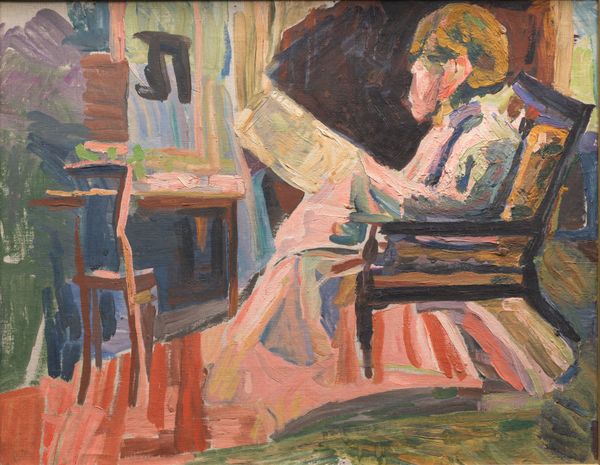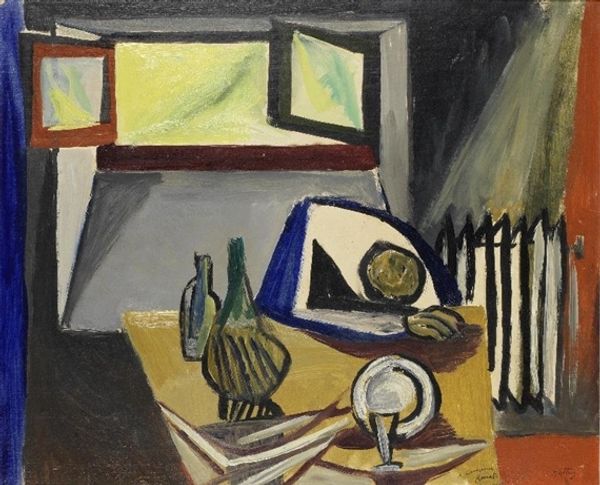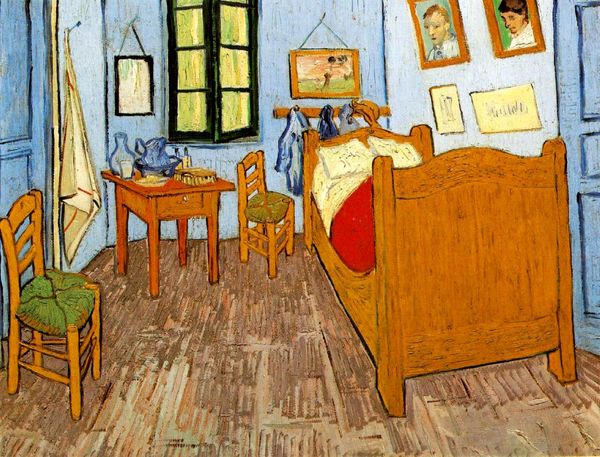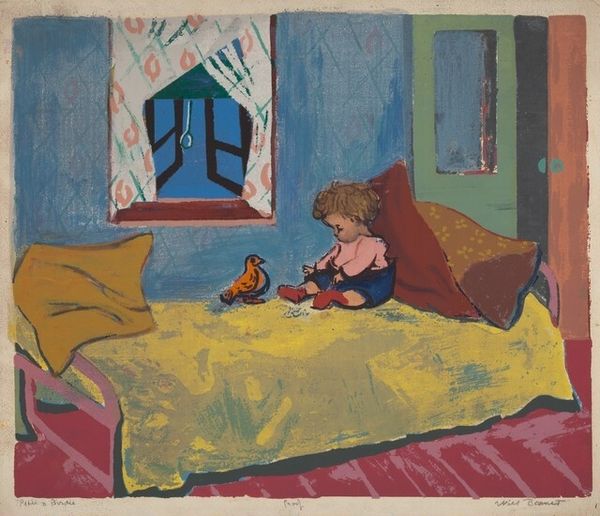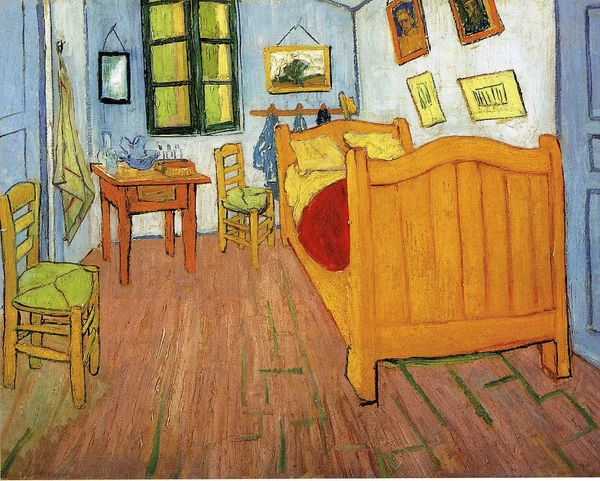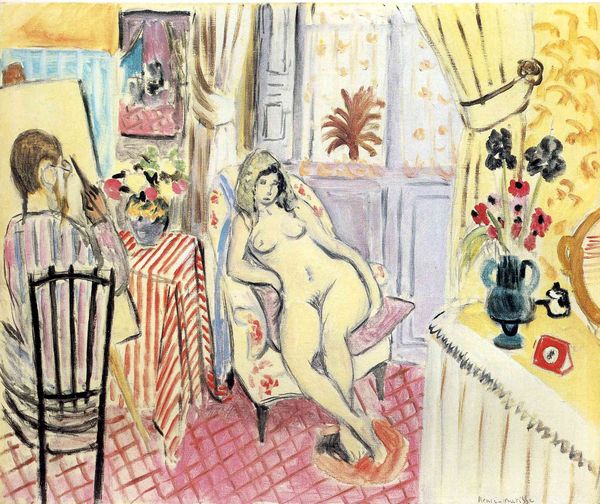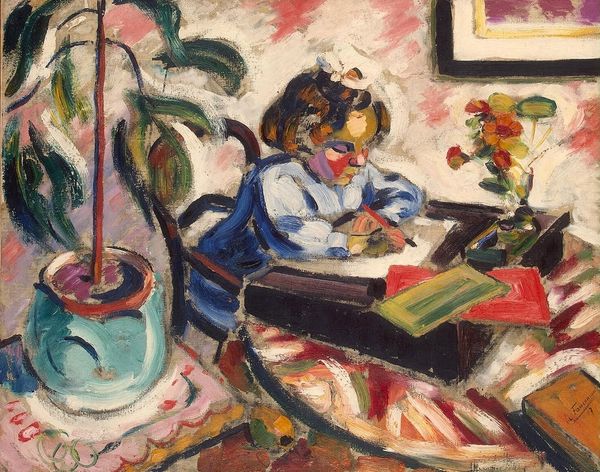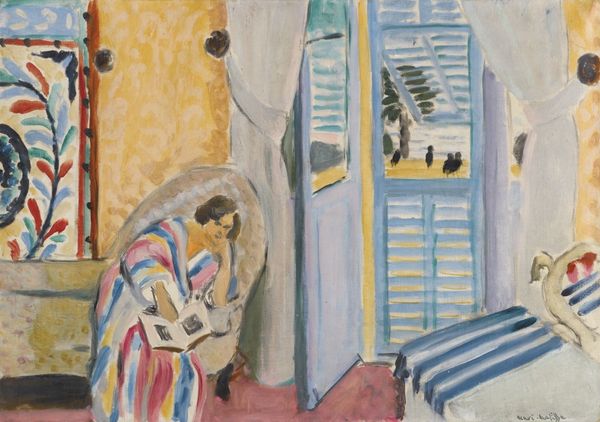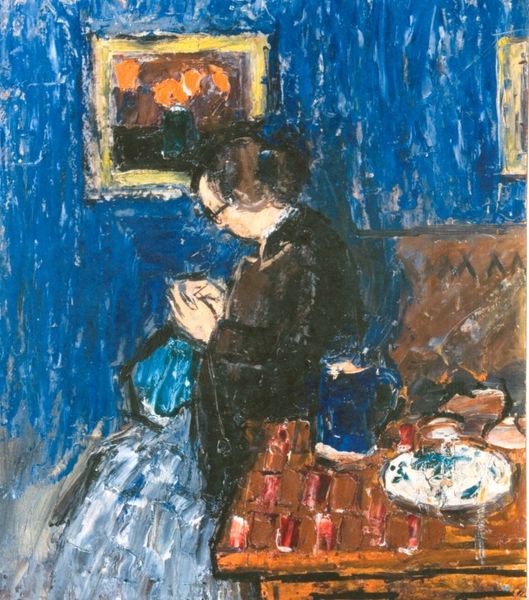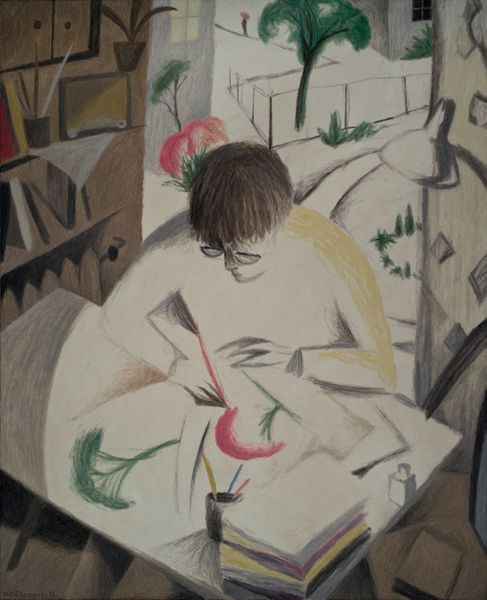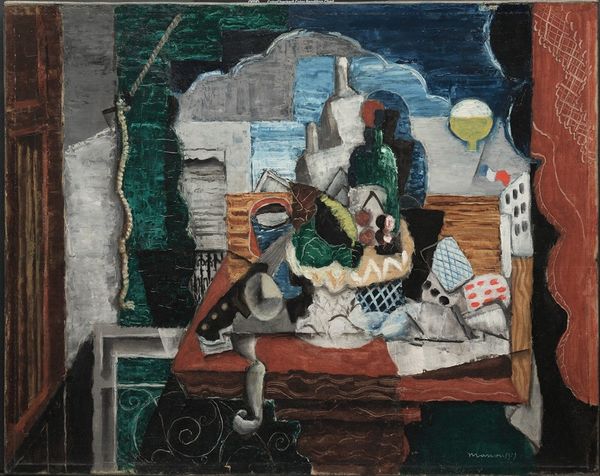
Copyright: Modern Artists: Artvee
Curator: Immediately, I’m struck by the deep blues; it's a surprisingly somber atmosphere for Matisse. Editor: Indeed. Let’s consider this work, titled “Studio with Goldfish.” Matisse completed this painting in 1912. You notice his persistent investigation into pictorial space and his continued exploration of domestic themes. Curator: Pictorial space indeed, it's all quite compressed. The flatness emphasizes the objects' presence rather than their depth. Look at the goldfish bowl, its circular form echoes the curved lines of the reclining nude nearby, it creates this sense of internal mirroring, an almost self-contained visual dialogue. Editor: You're right to notice the compressed perspective, it was a very prominent device in early cubism and Fauvism. It can be seen as his own personal grappling with exoticism and his experiences in Tangier, presenting the fish as a stand-in for this fascination. It’s more about what Tangier symbolized in French culture than a literal interpretation. Curator: The positioning of the nude also suggests some influence. The angle feels decidedly not European. The light, too. Though deeply blue overall, a shaft slices into the darkness. Editor: That interplay between the contained space of the studio and the suggestion of an exterior—seen through the window—creates a powerful dynamic. Consider how Matisse would later use open windows in his Nice period. The painting seems to want to break free, even when confined. Curator: It makes me wonder what he's aiming for beyond a decorative image. There’s almost a commentary, don't you think, about the role of art itself to mimic and interpret the real? Editor: Interesting idea. Through the window and painting he offers a layered perspective on what constitutes reality. But he keeps returning to this motif, implying that this mirroring act continues for the rest of his career. Curator: It seems that this tension he created never ends in his life and career, creating conversation. I'm so intrigued about Matisse now! Editor: Precisely! It makes us reflect on the constant flux and creative energy driving the artwork and its importance to Matisse's own self reflection and his place in the art world and greater history.
Comments
No comments
Be the first to comment and join the conversation on the ultimate creative platform.

